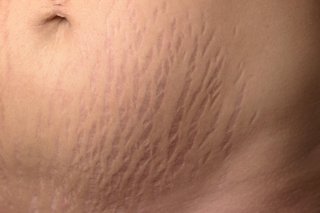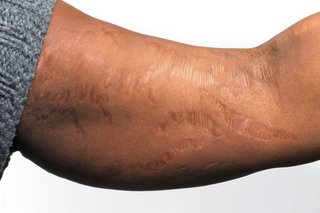Stretch marks are very common. They're harmless and often get less visible over time.
Check if you have stretch marks
Stretch marks look like lines or streaks across the skin.

Michael Heim / Alamy Stock Photo

SCIENCE PHOTO LIBRARY
Common causes of stretch marks
Stretch marks are often caused by sudden growth or weight gain.
You may be more likely to get them if you:
- are pregnant – read more about stretch marks in pregnancy
- are going through puberty
- lose or gain weight quickly
- are female
- are overweight
- use some kinds of steroid creams or tablets
- have a family member with stretch marks
What to do about stretch marks
It's not always possible to prevent stretch marks.
The best way to reduce your chance of getting them is by maintaining a healthy weight.
Read more about eating a balanced diet and losing weight safely.
Many creams and lotions claim to prevent, reduce or remove stretch marks. But there's very little evidence these work.
There are some treatments that may help make stretch marks look better, but they will not get rid of them.
They include:
- retinoid (often called tretinoin) creams or hyaluronic acid – these may help if used on new stretch marks, but you should not use retinoid creams if you're pregnant
- light or laser treatments
- microdermabrasion, which removes a thin layer of skin
You would need to pay for these treatments as they're not available on the NHS.
Non-urgent advice: See a GP if you have large, often dark, stretch marks and:
- have more fat on your chest and tummy, but slim arms and legs
- a build-up of fat on the back of your neck and shoulders
- a red, puffy, rounded face
These could be symptoms of Cushing's syndrome.
Page last reviewed: 31 January 2019
Next review due: 31 January 2022
